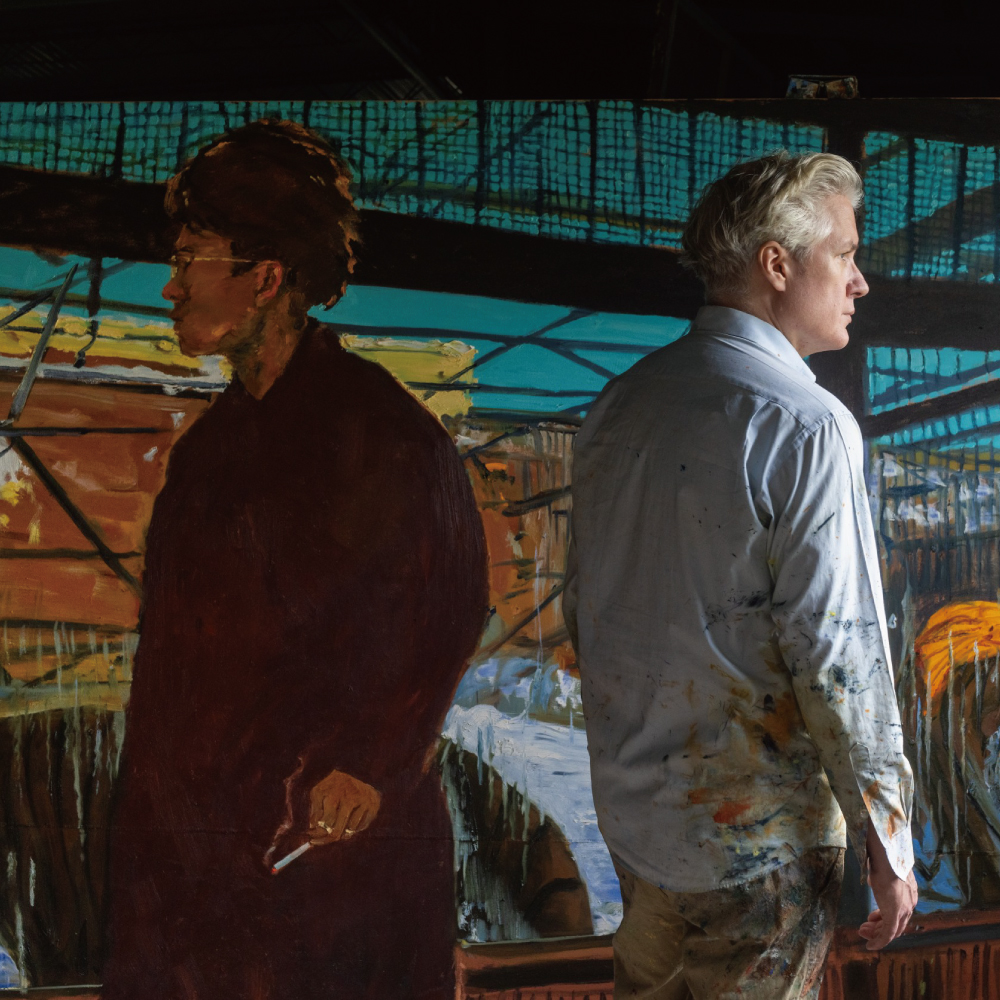
 Born in Manchester, UK, in 1975, and with a Master's degree in Painting from the Royal College of Art, London (1999), Daniel Pulman has lived and worked in various cities including Paris, New York, Japan, South Korea, China, and Taiwan. Currently, he resides and works in Qingshui, Taichung. From Manchester to Qingshui, Pulman embodies the 18th-century European tradition of the Grand Tour in the 21st century. As a contemporary flâneur, he navigates cross-cultural and sometimes detached relationships, moving through diverse places and times, keenly observing and capturing the rhythm of each landscape and the lives of its people.
Born in Manchester, UK, in 1975, and with a Master's degree in Painting from the Royal College of Art, London (1999), Daniel Pulman has lived and worked in various cities including Paris, New York, Japan, South Korea, China, and Taiwan. Currently, he resides and works in Qingshui, Taichung. From Manchester to Qingshui, Pulman embodies the 18th-century European tradition of the Grand Tour in the 21st century. As a contemporary flâneur, he navigates cross-cultural and sometimes detached relationships, moving through diverse places and times, keenly observing and capturing the rhythm of each landscape and the lives of its people.
Pulman's painting practice reflects his skill in conveying personal observations, perceptions, and memories of the natural landscapes and urban life he encounters. His work draws from the essence of 19th-century European tradition of figurative and landscape painting, showcasing his solid grounding in Western oil painting techniques. Within his figurative themes, he masterfully uses line and color to imbue his work with both three-dimensional depth and abstract significance.
During his recent travels across Asia, Pulman was deeply moved by how culture and art emerge from the daily lives of local communities. This experience has influenced his work, which not only highlights his mastery of Western painting techniques but also integrates profound depictions of Eastern landscapes.
The "Guguan Series," begun in 2021, was inspired by Pulman's journey with artist Suling Wang through the central mountain ranges of Taiwan. Along the Dajia River, they encountered a group of people swimming, fishing, and resting. Pulman was drawn to the unique tattoo motifs of these individuals and recognized a silent dialogue between these symbols and the surrounding rock formations. This insight led him to fuse nature and human culture in his artwork. Pulman’s earlier experience working as an assistant in the studio of Neo-Expressionist artist Julian Schnabel in New York complements his encounters in Guguan, deeply influencing his development of a series of works created with impasto (thick paint) techniques. During the creation of the "Guguan Series," Pulman repeatedly studied the interplay of natural rock layers, landscapes, and tattoo patterns, transforming them into organic, three-dimensional structures on a two-dimensional canvas. Using rich colors and layered brushstrokes, he subtly intertwines the tattoos of the people at the foot of the mountain with the flowing stream and textures of the rocks, creating a magnificent landscape in the series.
In 2023, Pulman unveiled a new series of night-time urban landscapes titled "Night Paintings." Inspired by his travels through Japan, South Korea, and Northeast China in the winter of 2020, this series reflects his continued exploration of the urban night. Pulman employs thick layers of paint to create textured surfaces that evoke the feel of snow covering roads and sidewalks, as well as the stark, unembellished industrial landscapes. The use of muted tones captures the soft, distant glow of streetlights reflecting off the snow, creating a sense of detachment and quietude. The figures in the paintings move through the city's night, their solitary forms representing the artist’s reflections, observations, and photographic documentation of his travels. Pulman believes that true art must be rooted in direct experience, and these works respond to his journey, radiating a sense of tranquility while also exploring the movements and solitude within the ever-changing, open spaces of modern cities and the world.
Pulman’s works have been featured in traveling exhibitions in Spain and the UK, including at Lancaster's Storey Gallery, Wrexham Memorial Royal Gallery in Wales, Galeri Winther in Stavanger, Norway, and the Royal Academy in London. In addition, Pulman has consistently created artworks during his travels to Turkey, Macedonia, China, and other locations, with a diverse range of works encompassing painting, drawing, and installations.